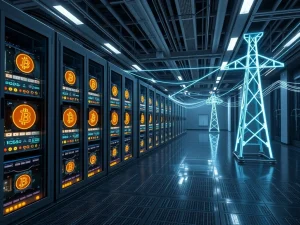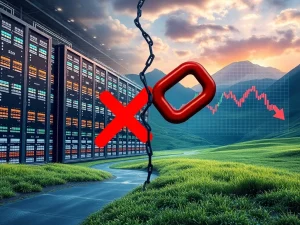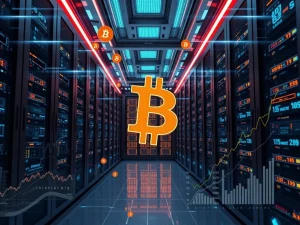Unlock the Potential: How to Mine Bitcoin at Home in 2025

Want to dive into the world of Bitcoin mining from the comfort of your own space? As Bitcoin gains ground with institutional adoption and regulatory clarity improves, more people are looking at how it’s created. Mining Bitcoin at home in 2025 might seem daunting, but it’s achievable with the right approach. This guide breaks down realistic methods, necessary gear, costs, and potential returns.
Low-Cost Fun: Lottery Mining Bitcoin at Home
If your budget is tight but you’re curious about Bitcoin mining, lottery mining offers a unique, albeit highly unpredictable, path. This method involves solo mining with minimal hash power, essentially buying a single lottery ticket in the massive Bitcoin network game. While statistically unlikely, rare wins do happen, like the solo miner who hit a block in 2024 with just 3 TH/s. This approach is less about steady income and more about contributing to the network, learning the process, and the thrill of a long-shot possibility. Devices like the open-source Bitaxe HEX or GekkoScience USB miners are popular for this, costing hundreds, not thousands, of dollars. They offer a cheap entry point to mine Bitcoin at home, supporting the network and providing hands-on experience, even if profitable rewards are rare.
Stepping Up: Solo ASIC Mining in 2025
Moving from lottery mining to solo ASIC mining significantly increases your hash power, but it remains a high-risk strategy for mining Bitcoin at home in 2025. ASICs (application-specific integrated circuits) are machines built specifically for this task. High-end models like the Antminer S21 Hydro offer impressive efficiency. However, even with a top-tier ASIC providing hundreds of terahashes per second, your slice of the global hashrate is tiny. The odds of finding a block on your own remain very low. Scaling up requires significant investment in multiple ASICs, proper infrastructure for cooling and power, and still doesn’t guarantee consistent success. The main appeal? If you do find a block solo, you keep the entire reward. But for most, this is a gamble best left to larger operations or those with substantial capital and high-risk tolerance looking to mine Bitcoin at home.
The Practical Approach: Join a Bitcoin Mining Pool
For most individuals serious about mining Bitcoin at home in 2025, joining a Bitcoin mining pool is the most practical and reliable strategy. Pool mining combines your computing power with thousands of other miners. When the pool finds a block, the reward is shared among participants based on their contribution. This transforms mining from a rare lottery win into earning smaller, consistent payouts. Popular pools like Foundry USA or Antpool process blocks regularly, offering predictable income streams. Payment models vary, such as FPPS (Full Pay Per Share) for daily income or PPLNS (Pay Per Last N Shares) which pays only on block finds but can yield slightly more over time. Setting up is straightforward: connect your ASIC to the pool, provide your wallet address, and monitor your performance. This method significantly reduces luck dependence and offers a steadier return for those who mine Bitcoin at home.
Hands-Off Option: Cloud Mining Bitcoin
If you want exposure to Bitcoin mining without managing hardware, cloud mining Bitcoin is an option. This involves renting hash power from a remote provider. You avoid hardware costs, heat, noise, and electricity bills. You pay a fee or subscription to the provider, and they theoretically send you a share of the mined Bitcoin. While convenient, cloud mining has a mixed reputation due to scams and contracts that become unprofitable after fees. Reputable providers exist, but margins are often thin, especially as mining difficulty increases. Cloud mining Bitcoin might suit you if you lack space, cheap electricity, or want a low-effort speculative play. However, for consistent returns or direct control, running your own hardware or simply buying Bitcoin might be a better use of funds than cloud mining Bitcoin.
In summary, mining Bitcoin at home in 2025 offers several paths, each with different costs, risks, and rewards. Lottery mining is cheap fun with minimal payout expectation. Solo ASIC mining is high-risk, high-reward, requiring significant investment. Joining a Bitcoin mining pool provides steady, predictable income and is the most common approach for home miners. Cloud mining offers convenience but comes with its own set of risks and often thin margins. Your choice depends on your goals, budget, and risk tolerance. Understand the realities of each method to make an informed decision about how you want to participate in the Bitcoin network from home.









